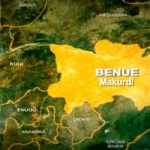Why We Adopted Open Access Model – Juwah
 On July 26, 2012 the Nigerian Communications Commission (NCC) held the first industry consultation on the Broadband Initiative with the theme “Demand as catalyst for broadband services in Nigeria”. The consultation, the commission said, was to engage the industry stakeholders on the direction of the Next Generation Broadband Network (NGBN) in Nigeria. Following this, between the 15th and 22nd of July, 2013 the NCC conducted a one-on-one session with select Operators/industry stakeholders on the strategic objectives for the deployment of nationwide optic fibre infrastructure for broadband, as well as to seek their input on the initiative.
On July 26, 2012 the Nigerian Communications Commission (NCC) held the first industry consultation on the Broadband Initiative with the theme “Demand as catalyst for broadband services in Nigeria”. The consultation, the commission said, was to engage the industry stakeholders on the direction of the Next Generation Broadband Network (NGBN) in Nigeria. Following this, between the 15th and 22nd of July, 2013 the NCC conducted a one-on-one session with select Operators/industry stakeholders on the strategic objectives for the deployment of nationwide optic fibre infrastructure for broadband, as well as to seek their input on the initiative.
Broadband obviously is the next level of Nigeria’s telecommunication revolution. The fact that the country has little access to broadband services, even with the growing number of undersea cables running across the country is an issue. It is even more ironical that a country which has become a global example in the telecoms milieu is lagging behind in terms of broadband and internet penetration. From Lagos to Abuja, to Bangkok the broadband sermon continues to be preached relentlessly. Recently stakeholders came together at a consultative forum on ‘Open Access Model for Next generation Optic Fibre Broadband Network: The Nigerian Model’.
According to the NCC, the need for cost effective widespread deployment of robust national and metropolitan optic fibre transmission network, to achieving global economic competitiveness cannot be over-emphasised and effective deployment would include ensuring an even playing field where infrastructure sharing takes place.
speaking at the forum the EVC, NCC, Eugene Juwah said that the Open Access Model which the commission has proposed, will potentially help optimise the cost of broadband access across Nigeria and ensure that all operators, whether large or small have equal access to broadband infrastructure and in this regard he added, the NGBN will be an open-access carrier-neutral backbone and metropolitan fibre network that spurs service innovation. The NGBN framework will provide an open- access, non-discriminatory and non-exclusive pricing to all service providers.
“Thus, the Commission is committed to putting in place a new broadband deployment environment through an ‘Open Access Model’ in line with the National Broadband Plan. The ‘Open Access Model’ has been examined as the model for optic fibre transmission network deployment to bridge the current gap and deliver fast and reliable broadband services to households and businesses. The model is also envisaged to address the challenges of congested and unplanned towns, the challenges around infrastructure sharing and other issues such as high cost of Right of Way”.
“The objective of this initiative is to stimulate a new national broadband network that is not only more widespread but also faster and more secure than what is available today, thereby stimulating other sectors of the economy and leading to higher economic spinoffs for Nigeria. In addition, it will offer efficient connectivity as well as ultra-high-speed broadband services that are available, affordable and sustainable”.
To achieve this the commission said an Infrastructure Company (InfraCo) will be established to help roll out a national fibre optic network for broadband under a national broadband plan promoted by the President to boost high speed Internet services across Nigeria and targets a five-fold increase in broadband penetration by 2017 over the 6.1 per cent penetration in 2012.
Roll out operation
Guaranteeing that further fibre roll out will be coordinated between all stakeholders the NCC said it would consult to ensure “deployment phasing and the creation of a sustainable business model that benefits the whole of the industry while achieving the objective of greater broadband penetration.
The NCC also wants to move away from the current industry structure of integrated operators offering end-to-end services and long distance operators offering wholesale services amongst others”.
The commission therefore said that the three tier system made up of a ‘passive infrastructure layer’, ‘wholesale layer’ and ‘retail service providers (RSPs)’ will be implemented.
“While the first layer will be responsible for the design and infrastructure building for fibre rollout, the wholesalers will manage terminal equipment, optic fibre electronics, routers and data centres.
The RSPs will then buy bandwidth from the wholesale operators and compete amongst themselves to provide “competitive and innovative services to end-users”, NCC added.
Auctioning of 2.3GHZ
The NCC said it will auction the 2.3GHz frequency spectrum early next year to complement existing solutions.
The NCC added that, “the available 2.3GHZ spectrum license will be auctioned to provide last mile wireless access on a wholesale basis.” thereby promoting equal access to fibre links on open access basis to service providers.
“The Wholesale Wireless Last Mile Provider will interconnect with the proposed InfraCos at their Points of Access (PoA), thereby creating an integrated broadband service nationwide to homes and businesses”, Juwah said.
CDMAs and Open Access Model
The Code Division Multiple Access, CDMAs, which are gradually becoming ‘extinct’ have a case in their favour as they are included in the plan to roll out broadband across the country.
Speaking on the issue of CDMAs’ involvement in the broadband plan, Juwah said, “This is not addressing the issue of CDMA but what I can tell you is that CDMA operators will have a chance to also participate in broadband and bid for licenses if they want. No one is going to stop them from their operations, but in addition they will have a chance to improve their network and also join in this next initiative which is a new market segment that is best in Nigeria.”
“Notwithstanding recent progress, fibre deployment in the country has been plagued by myriad difficulties ranging from administrative procedures regarding rights of way permits, to poor urban and regional planning, multiple taxation, damage to fibre cables and poor infrastructure sharing.
“Existing nationwide operators are vertically integrated with end to end service offerings riding on their own infrastructure. There is also duplication of fibre infrastructure on some routes while there is lack of access to fibre infrastructure in other areas.”
Speaking further, the EVC said the model will also help to address the problems of congestions and unplanned towns, infrastructure sharing, high cost of right of way and others.
He also noted that the objective of the initiative is to inspire a new national broadband network that is not only widespread but also faster and more secure than what is now available, so as to boost other aspects of the Nigerian economy, while adding that the Nigerian economy would have become a knowledge based economy by 2020 through information and communications technology.
“The Nigerian vision 20:2020 economic transformation blueprint is a long term plan for stimulating Nigeria’s economic growth and launching the country onto a path of sustained and rapid socio-economic development.”








